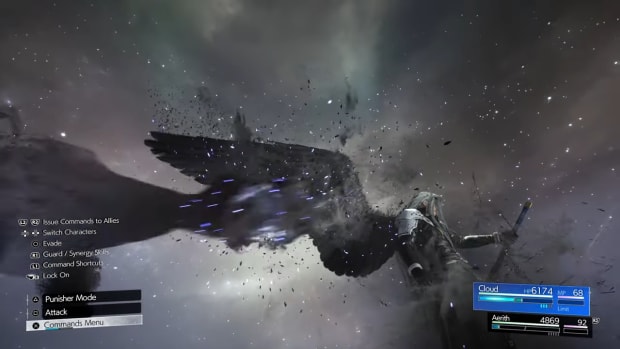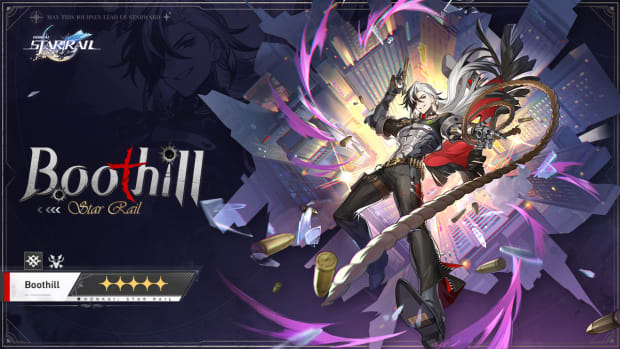Mortal Kombat 1 review: a B-movie klassic
Mortal Kombat 1 is a new universe: that’s what Ed Boon kept repeating at every game conference stage show this Summer, and for the most part, he’s right. MK1 is set in a brand new timeline, one born at the end of Mortal Kombat 11’s fight with Kronika, built by Liu Kang with the goal of putting all the realms at peace. Well, peace never lasts, and this is Mortal Kombat, so before the story concludes, the cheery, rosy-cheeked innocent cherub that is young Raiden sees a decapitated head roll down a flight of stairs, rest at his feet, and he looks up with all of the glee of the Milky Bar Kid as he says “Thanks Kitana!”
MK1 is silly. Just, so silly, and I wouldn’t have it any other way. Netherealm is known for making fighters with explosive story modes, and this is no different. Liu Kang’s peaceful vision for the universe gets interfered with, and we soon see a new threat to the universe’s balance. Things start out simply enough, with Liu Kang recruiting a young Raiden and Kung Lao from their humble life of Shaolin training and working the fields. Along with Johnny Cage and Takahashi Takeda, the gang are taken to be training up as the new defenders of Earthrealm.
For the most part, the timeline revision has worked out well. It allows new players (or anyone that forgot past storylines) to jump in and be reintroduced to the cast of characters without it ever feeling like you’ve seen it all before. There are a few quirks though; Liu Kang has changed up character alliances, personalities, and even relationships, and how things have developed is far more interesting if you know who they used to be. And in case you couldn’t tell already, the fact that this timeline was built at the end of MK11 means this isn’t truly a fresh start for the universe or narrative.
The storyline is a solid B-movie adventure. As usual, it’s a series of cutscenes linked together by fights, and it gives the impression that the plot was written well in advance, and it was someone else’s job to insert enough gameplay to keep the player invested. Johnny Cage speaks almost exclusively in movie references, which is just dumb enough to remain endearing, but even the more “serious” dialogue ends up sounding like the kind of hyper-cliché an AI could’ve come up with when fed enough ‘80s action movie scripts. Luckily it’s not to be taken seriously, and it’s easily entertaining enough to keep you playing til the end.
The story mode is a key component to any Netherealm fighting game, but it’s hardly the only thing fans want. There’s a hardcore community of Netherealm fighter fans out there, and the new mechanics here will either make their year or ruin their experience, depending on the kind of player they are. Kameos are the big addition, and these are fighters that are exclusively there as back up. You can call in a Kameo to unleash an attack – which you can use for mix-ups or combo extensions – or you can use a Kameo to help you escape a potentially deadly combo. Sorry – kombo.
It’s a smart addition, one that’s going to give MK1 a distinct flavor – and potentially a distinct fanbase – when compared to other NR titles. It will inevitably be divisive, and some of the character/Kameo combinations are already far too strong, in need of an inevitable adjustment. The layer of strategy and depth Kameos offer has only begun to be tapped into, and if nothing else, it’ll be fascinating to see how the – ahem – kompetitive kommunity adapts to these new mechanics.
If you put Kameos aside for a second, what you’re left with is, well, Mortal Kombat. Character models are beautifully detailed and each have customization options you can unlock, fights are still the classic best-of-three affair, and battles are great fun. Each character feels distinct, and with Kameos to modify your approach, it feels like the game is more open to a wide variety of gameplay styles than ever before. Plus, it just feels good to juggle an enemy in the korner. Doesn’t it always?
The Krypt has been traded out, instead replaced with the new Invasions mode. This is a fascinating board game-like mode where you guide your chosen character around a few familiar MK environments. Each step on the board has a new challenge, like a Test of Might, a battle, a tutorial, or perhaps even a reward for your progress. The environments do a lot to make this mode feel interesting, but if you’re playing MK1 for the story, you should make sure to give Invasions a look too. It’s solid fun, and shouldn’t be skipped.
If I wanted to nitpick then I’d say, hey, the transition between high-quality CGI cutscenes and in-game visuals in the story mode can sometimes be a bit too obvious – Tekken 7’s were practically seamless – but it’s so minor it’s barely worth mentioning. MK1 can still feel a little stiff when compared to the movement and flexibility available in other popular fighting games, but Netherealm fans know exactly what to expect, and they already know they like it that way.
All told, MK1 is a pretty brilliant package. It doesn’t have the same swathe of content that Street Fighter 6 launched with earlier this year, but what is here shines. It’s gory, brutal, and incredibly kamp. This is a great step forward for a franchise that was at risk of stagnating. This is a modern Mortal Kombat klassic.
Score: 8/10
Version tested: PS5
- Visuals: 9/10
- Audio: 7/10
- Gameplay: 8/10
- Performance: 10/10
Mortal Kombat 1 technical performance
Throughout my experience with MK1 on PS5 I was unable to spot any hitching or unusually long load times – it’s well optimized and plays smoothly, as you’d expect from a modern fighting game.






